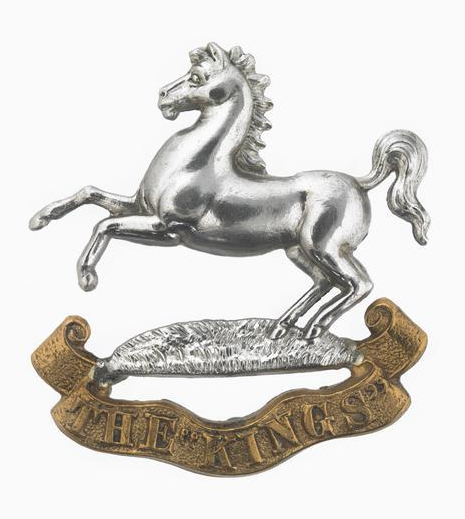Personal Details
Born: 9 December 1889.
Family: The third child of John and Anne Dodd of 6 Barlow’s Yard. Whitchurch, Shropshire.
Civilian Occupation: On leaving school he became a butcher’s assistant but when he enlisted he was an iron foundry labourer.
Residence: At the time of the 1939 Register Frederick was living at 31 Yardington, Whitchurch, Shropshire.
Died: In December 1951 aged 62.
Military Details
Regiment: The King’s (Liverpool Regiment) (previously King’s Shropshire Light Infantry)
Rank: Private
Service Number: 33724, (previously 19014)
Date of Enlistment: 11 October 1915
Date of Discharge: 3 March 1919
Reason for Discharge: Demobilisation
Other Information: He initially joined the King’s Shropshire Light Infantry but was subsequently transferred to The King’s (Liverpool Regiment). On the 6 March 1916 he was posted to Egypt and fought in the Middle East and the Balkans during the war.
Frederick was awarded the Campaign Medals (British War Medal, and Victory Medal).

The British War Medal (also known as 'Squeak') was a silver or bronze medal awarded to officers and men of the British and Imperial Forces who either entered a theatre of war or entered service overseas between 5th August 1914 and 11th November 1918 inclusive. This was later extended to services in Russia, Siberia and some other areas in 1919 and 1920. Approximately 6.5 million British War Medals were issued. Approximately 6.4 million of these were the silver versions of this medal. Around 110,000 of a bronze version were issued mainly to Chinese, Maltese and Indian Labour Corps. The front (obv or obverse) of the medal depicts the head of George V. The recipient's service number, rank, name and unit was impressed on the rim.
The Allied Victory Medal (also known as 'Wilfred') was issued by each of the allies. It was decided that each of the allies should each issue their own bronze victory medal with a similar design, similar equivalent wording and identical ribbon. The British medal was designed by W. McMillan. The front depicts a winged classical figure representing victory. Approximately 5.7 million victory medals were issued. Interestingly, eligibility for this medal was more restrictive and not everyone who received the British War Medal ('Squeak') also received the Victory Medal ('Wilfred'). However, in general, all recipients of 'Wilfred' also received 'Squeak' and all recipients of The 1914 Star or The 1914/1915 Star (also known as 'Pip') also received both 'Squeak' and 'Wilfred'. The recipient's service number, rank, name and unit was impressed on the rim.

